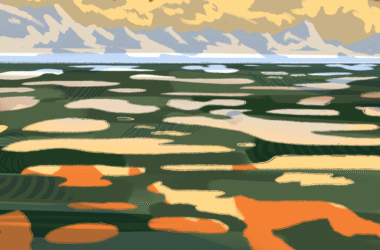How do we understand the dynamic population changes taking place in Canadian cities? At the end of 2024, the Superdiversity in Canadian Cities website will launch, designed to make complex immigration census data accessible to a wide audience.
On Nov. 7, the McGill Institute for the Study of Canada (MISC) hosted a talk by Daniel Hiebert, a Professor Emeritus of Geography at the University of British Columbia, showcasing the capabilities of this user-friendly data project.
Hiebert began by introducing his own research on superdiversity—a term coined by his partner for the project, Steven Vertovec, director of the Max Planck Institute for the Study of Religious and Ethnic Diversity. The “super” in superdiversity refers to superimposition, which captures the layered nature of diversity across nationality, ethnicity, religious affiliation, income, and other traits that shape the population of metropolitan centres in Canada.
The goal of the Superdiversity in Canadian Cities website is to allow Canadians to access census and social demographic data and to illuminate the rapid urban changes in metropolitan Canadian cities that are unfolding as a result of immigration.
Heibert led the attendees of the talk through the primary features of the website, which include a series of interactive graphs visualizing the population of immigrants over time. These graphs compare socioeconomic measures against other factors like ethnic background, age, gender, and generation. The socioeconomic measures include education level, employment status, income, and housing status, compared to the population average.
Additionally, users can see maps showing where newcomers settle on a local, provincial, and national scale.
“We want to let people see for themselves,” Hiebert said.
This is just the tip of the data-iceberg that will be completely public by the end of 2024, as the website will be highly interactive, allowing the user to explore the intricacies of urban superdiversity.
“We feel that Canadians have developed a set of assumptions about how immigrants integrate or perhaps don’t integrate into Canadian social life,” Hiebert said.
One goal of the website is to dispel common myths about immigration, mainly by emphasizing the complexity of the data, rather than the generalizations we often hear in the news.
Hiebert used his website to illustrate the complex socio-cultural environment in Montreal and the makeup of its population over time.
According to Hiebert, about 1 per cent of Montreal identifies as Indigenous. Within the past 25 years, the population in Montreal that identifies as European has barely grown at all. Notably, the real growth in Montreal has been in people who are coming from Asia, Africa, and Latin America.
“We want to show that in places like Montreal, diversity and social complexity is the norm rather than an exception,” Hiebert said.
He also stressed an important implication of the data, which is to negotiate a sense of a common identity through all of this diversity.
“At the [Immigration, Refugees, and Citizenship Canada] IRCC, they think about policy, but they don’t think very much about the local outcomes of that policy,” Hiebert said.
Hiebert aims for this resource to reach the general population, but also policymakers and the government itself to inform immigration policy decisions.
Given the high degree of diversity in an urban Canadian city like Montreal, Hiebert explained that it was no wonder that government-mandated advisory committees struggle to accurately represent Montreal’s complex population.
“If you’ve got people from 190 countries, and they’re also differentiated by religion, sex, age, and everything else, what do you want? A committee of 10,000 people?” Hiebert asked. “Notice the simplicity of this compared to the complexity of [Montreal’s population]. And that’s the superdiversity story.”
Overall, Hiebert’s presentation shed light on the concept of superdiversity and how it is visualized for Canadian cities. He ended by briefly mentioning the need for further development of visualization tools in the future.









